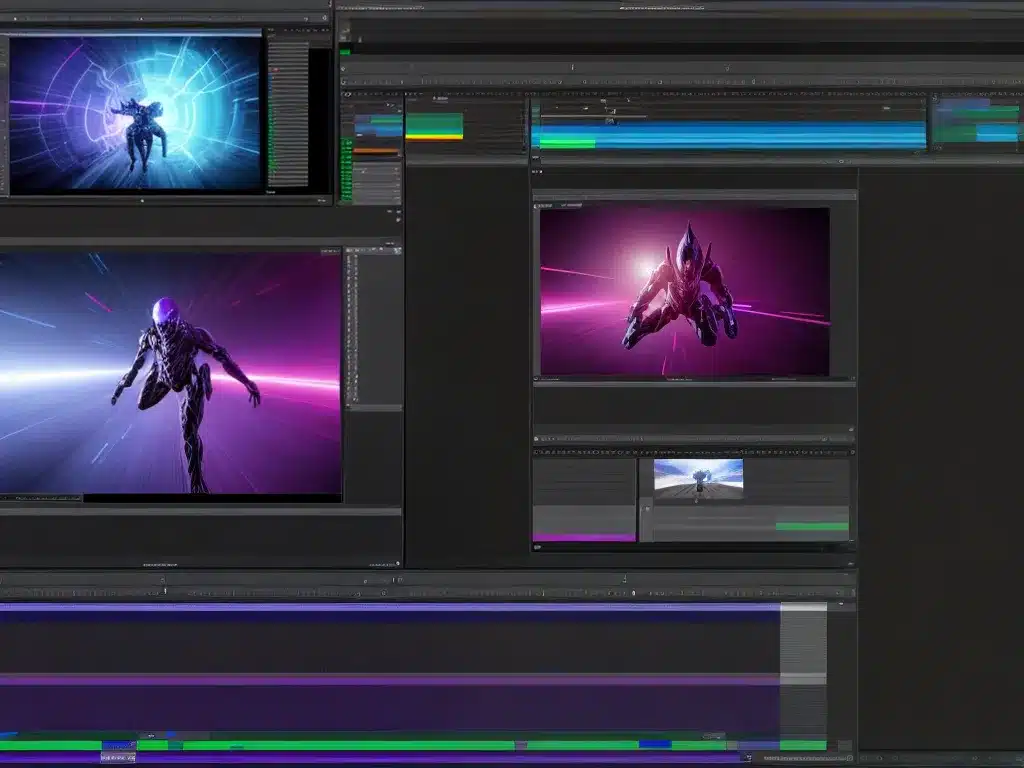
After Effects is Adobe’s industry-leading motion graphics and visual effects software. Two major new features coming soon to After Effects will dramatically improve workflow and interactivity for motion graphics artists and visual effects professionals.
Real-Time Preview Engine
The new Real-Time Preview engine will enable real-time playback of uncached frames. This means I can now preview compositions and see changes rendered in real-time without needing to cache frames first.
Some key advantages of the real-time preview engine:
- No more waiting for frames to cache before previewing. Changes to compositions are displayed immediately.
- Ability to scrub the timeline and get fluid playback even for complex projects.
- Faster iterative workflow since I don’t need to wait for caching between changes.
- Reduced need for proxy workflows since I can now preview complex comps in real-time.
- See accurate motion blur and effects during playback without caching.
This brings a huge boost in interactivity and removes one of the biggest bottlenecks in an After Effects workflow. It will enable me to work faster and see my changes as I make them.
Multiframe Rendering
After Effects is also getting multiframe rendering capabilities. This enables After Effects to take full advantage of multiprocessing power by rendering multiple frames simultaneously.
Key benefits of multiframe rendering:
- Faster final renders – Render times can be significantly reduced by utilizing multiple CPUs and GPUs.
- Native integration within After Effects – no need for add-on renders.
- Works for both final frame renders and intermediate caches.
- Easily scale up renders by adding more CPUs or GPUs.
This update makes it easy to harness more computing power for faster renders. For complex projects, I can greatly speed up my final output renders.
Combined together, these two updates enable a much faster and more fluid After Effects workflow. I can iterate faster, see accurate previews immediately, and output final frames quicker. This makes After Effects much more interactive and powerful for creating high-end motion graphics and VFX.
Real-World Impact
Here’s some examples of how these updates will improve my real-world workflows:
Iterating on Complex Motion Graphics
When creating a complex 30-second motion graphics project, I often need to preview small sections iteratively to get the timing and animation right. Previously, I would need to cache every change before previewing, which was slow and cumbersome.
Now with real-time previewing, I can scrub through the timeline and see all changes immediately, allowing me to fine-tune animations much faster.
Previewing VFX With Motion Blur and Particles
Motion blur and particle effects are computationally heavy and previously required caching before previewing accurately. With the real-time engine, I can now preview these effects in real-time without lengthy caching.
This allows me to adjust motion blur and particle effects interactively and see the results immediately. A huge time-saver!
Reducing Final Render Times
For a complex 4K project, my final renders used to take hours to output on a single CPU. Now with multiframe rendering, I can add additional GPUs to dramatically speed up my final renders and get my deliverables out much quicker.
Rather than waiting overnight, I can render projects in a fraction of the time.
Conclusion
The upcoming real-time preview engine and multiframe rendering in After Effects represent massive leaps forward in interactivity and performance.
For my needs as a motion graphics artist and VFX professional, these features will enable me to work significantly faster and see instant feedback on changes. They remove previous bottlenecks that slowed down my iteration cycles and final renders.
I’m really excited about these updates and the huge workflow speed boosts they will provide once released! After Effects will become an even more powerful creative tool for producing high-quality motion graphics and visual effects.












